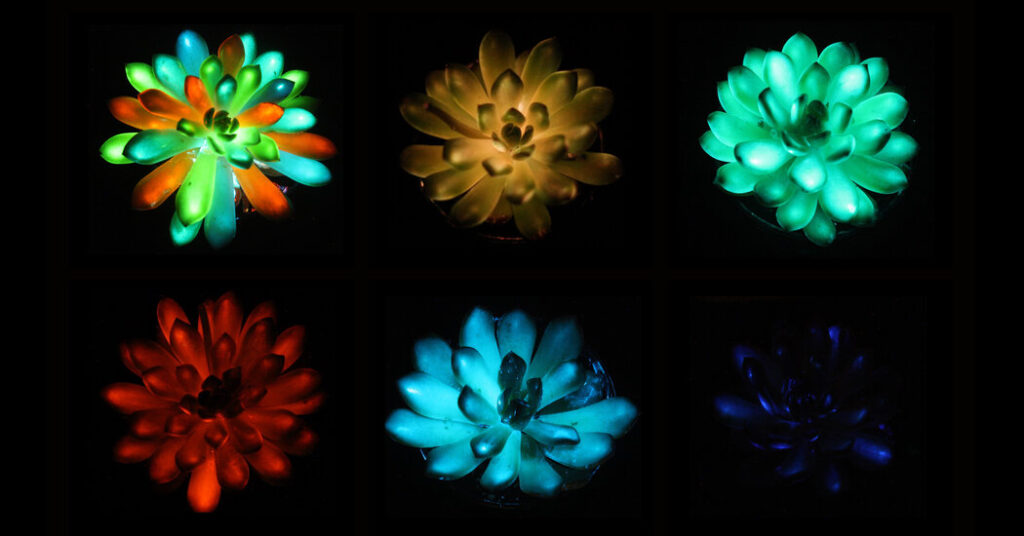Step 1: Jot down your ideas and share with a partner.
-
Would you want to own a glow-in-the-dark plant? Do you think other people might want to own one? Why, or why not?
-
How might a glowing plant be useful?
Step 2: Read a Times article about a recent study.
Read the New York Times article “It’s a Night Light. It’s a Plant. It’s a Glowing Succulent,” published on Aug. 27. It begins:
Plants already aid us in countless ways — feeding and clothing us and providing the very air we breathe. Someday, they may also help us find our way to the bathroom at night.
In a paper published on Wednesday in the journal Matter, researchers at South China Agricultural University describe how they created glow-in-the-dark plants by injecting synthetic materials into the tissues of living succulents. These bionic botanicals can be made to emit light in a variety of colors and can “recharge” with light exposure. But they are not yet quite ready for prime time (or bedtime).
The succulents got their glow-up at the university’s Key Laboratory for Biobased Materials and Energy. Researchers at the lab often explore techno-plant mash-ups, as in a 2018 paper describing the use of carbon nanoparticles to make photosynthesis more efficient. For this project, they wanted to create “a living, light-charged plant lamp,” said Shuting Liu, a lab affiliate and the first author of the paper.
Step 3: Analyze the study.
1. What was the scientific question that researchers wanted to answer?
2. How did researchers plan and carry out their investigation?
3. What do you notice in the video above? What does it show about the study?
4. What explanation did researchers construct, using the data they collected and interpreted, to answer their original question? (Data is the factual information collected during observations, experiments or studies.)
5. What are limitations of the study?
6. What significance does this research have for science, the world or our lives?
7. What is one thing you learned about this study or about how scientists approach their work?
8. To what extent are you concerned about the possible environmental impact of using synthetic materials to create glowing plants? What further questions do you have about this research and its significance?
Step 4: Work with others to come up with your own scientific investigation.
In this study, researchers tried to better understand how to create glow-in-the-dark plants. Collaborate with others to propose another scientific investigation about glow-in-the-dark technology. For example, a scientist might want to investigate how to use bioluminescent properties to track the spread of diseases.
-
What scientific question might you want to answer?
-
Briefly describe how you might design a study using similar techniques mentioned in the article to try to answer that question.
More?
• Science Practice, a new resource aligned with the Science and Engineering Practices for the Next Generation Science Standards, aims to help students better understand how scientists actively gather evidence-based knowledge and solve problems. Learn more about this feature in this introductory post.
• See all the lesson plans in this series.
The post Science Practice | A Study on Glowing Succulents appeared first on New York Times.




